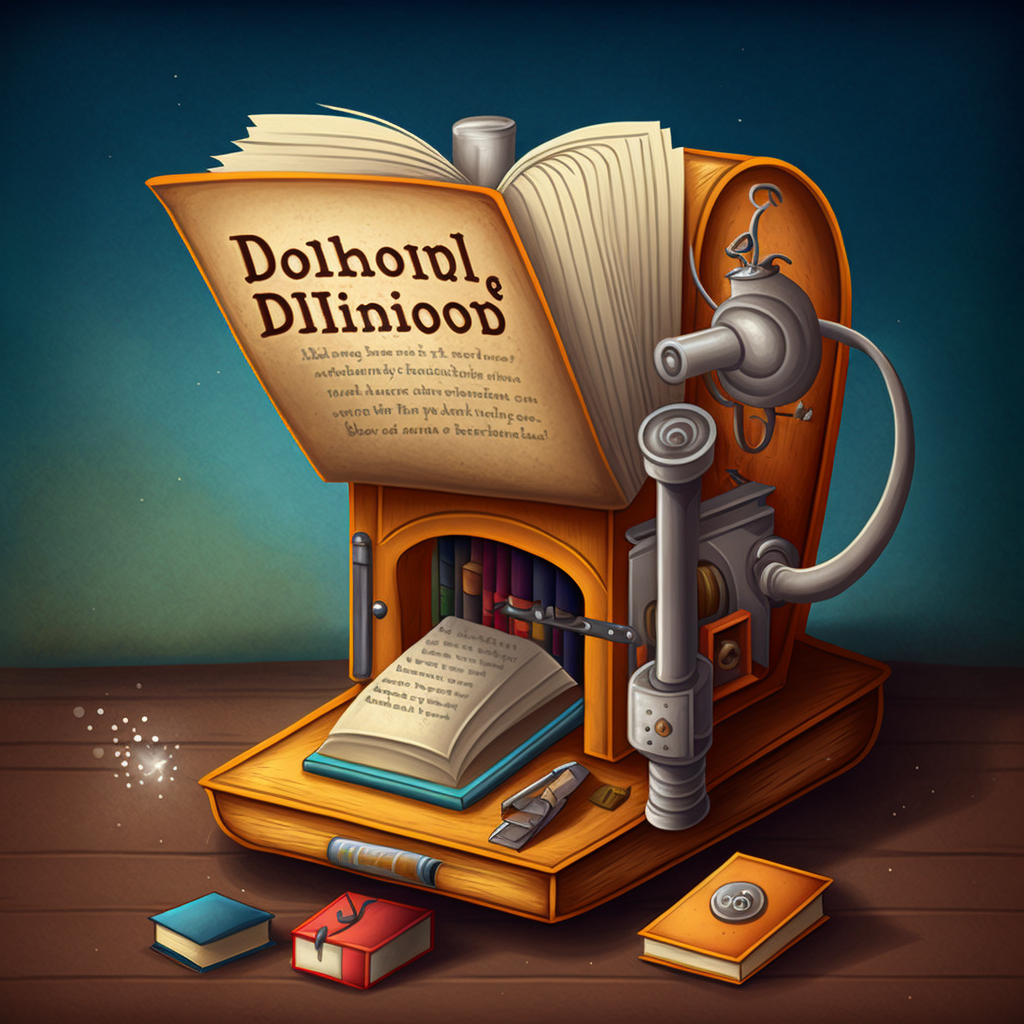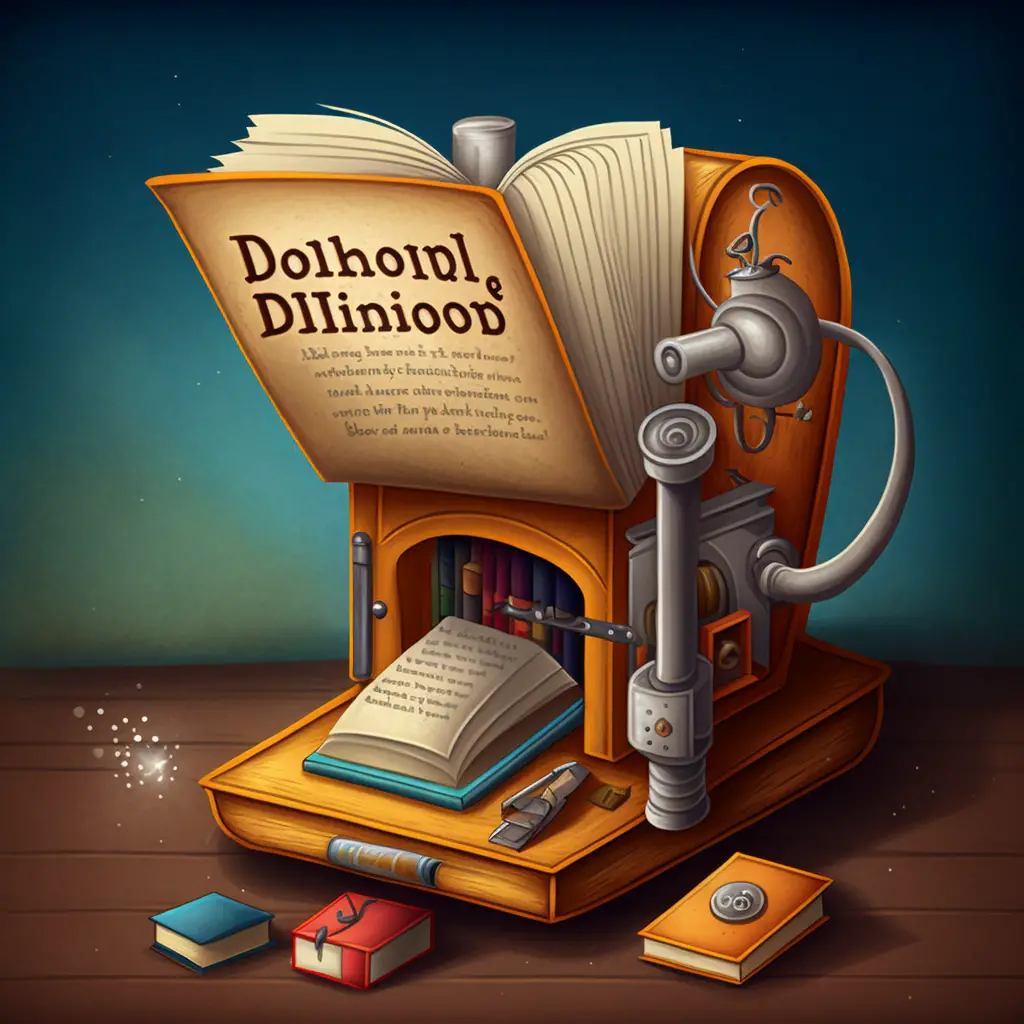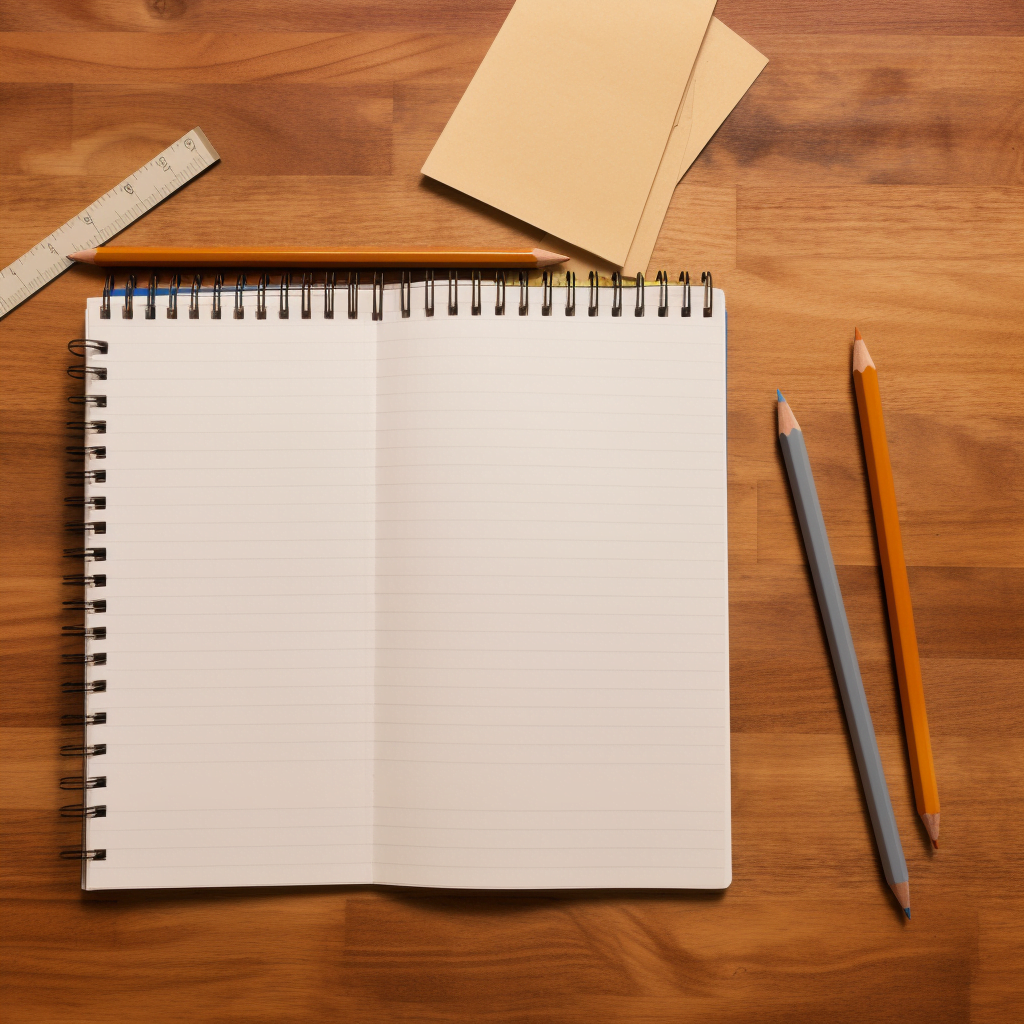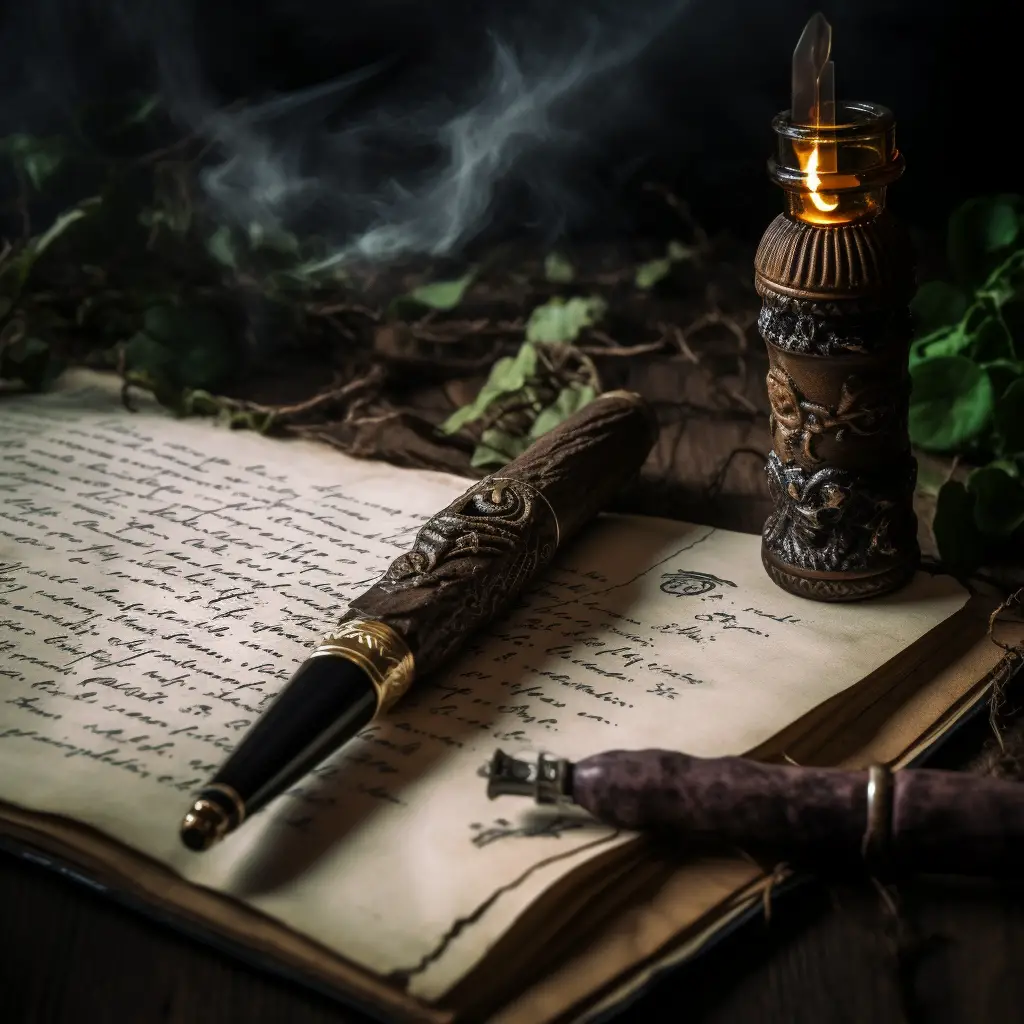
“While I nodded, nearly napping, suddenly there came a tapping…” — Edgar Allen Poe
Do you consider yourself a wordsmith? Are you a bit of a cunning linguist? Are you looking to add some extra pizzazz to your writing? If the answer to any of these was a “Yes!” or “No! Not yet.” or “What?”, then you’re in the right place!
Today we’re discussing 70 literary devices and terms every writer should know.
When you’re writing, you want to make sure you’re providing the best content you can. That’s why it’s important to understand every aspect of the craft of writing. One of the best ways to improve your writing is to become familiar with the most common literary devices and terms.
It’s like having a secret weapon to make your writing shine!
So, along my personal journey to improve as a writer — and hopefully, I have — I’ve been collecting as much information about the mechanics of the craft itself. It’s part of my ongoing belief in the protégé effect.
To that end, here’s a giant list of 70 literary devices found in literature throughout time, crafting the intriguing stories, books, and essays we all love to read.
But first, it might help to understand just what a literary device actually is.
What is a Literary Device?
A literary device is a tool used by writers to create and enhance their stories. It’s like a toolbox that has countless tools and gadgets, each one helping to make the writing more interesting and meaningful.
Literary devices are used to build a story and make it more vivid and interesting. They can be used to create a certain mood, evoke an emotion, create suspense or surprise, or explain a concept or idea.
Some of the most common literary devices include metaphors, similes, alliteration, personification, and irony.
In a nutshell, literary devices are all the tricks and tools writers use to make their stories more exciting and enjoyable. Without them, stories would be dull and boring.
So be sure to thank your favorite authors for their use of these amazing tools — and for providing you with hours of entertainment! Oh, and if that’s not enough, a good pun never hurt anyone either.
Now let’s go find out the 74 most common literary devices used by writers all over the world!
72 Literary Devices to Use to Become a Better Writer
#1. Metaphor
What is a metaphor?
“A metaphor is a figure of speech that describes a subject by asserting that it is the same as another unrelated thing, giving an image or idea that helps explain an abstract concept.” — Threw the Looking Glass
Example:
He was a walking encyclopedia of useless information.
#2. Simile
What is a simile?
“A simile is a figure of speech comparing two things, usually to emphasize or add imagination to a statement.” — Threw The Looking Glass
Example:
He was as tall as a giraffe doing a handstand.
#3. Imagery
What is imagery?
“Imagery is a literary device that creates vivid mental pictures through descriptive language, appealing to the reader’s senses like sight, sound, touch, taste, and smell.” — Threw The Looking Glass
Example:
The aroma of freshly baked cookies filled the air, tickling our noses like an invisible feather.
#4. Symbolism
What is symbolism?
“Symbolism is when a writer uses an object, person, place, or action to represent something else, usually an idea or emotion.” — Threw The Looking Glass
Example:
The umbrella, shielding him from the storm and his mother’s unwavering protection.
#5. Personification
What is personification?
“Personification is a playful literary trick where non-human things are given human-like qualities, making them come alive in the reader’s imagination.” — Threw the Looking Glass
Example:
The alarm clock yawned, lazily announcing the start of the day.
#6. Hyperbole
What is hyperbole?
“Hyperbole is when an author uses exaggeration, taking something ordinary and stretching it to the extreme, making readers chuckle or gasp at its over-the-top nature.” — Threw the Looking Glass
Example:
She had a smile that could light up an entire city.
#7. Irony
What is irony?
“Irony is a witty twist, when the unexpected happens or words convey the opposite of their literal meaning, sparking surprise and amusement in the reader.” — Threw the Looking Glass
Example:
The fire station burned down.
#8. Juxtaposition
“A juxtaposition is when two ideas, characters, plot points, or other elements of a story are placed side–by–side for comparison (or to create an interesting contrast).” — Threw the Looking Glass
Example:
The comedian’s dark, sarcastic humor contrasted with his bright, cheerful outfit.
#9. Paradox
What is a paradox in writing?
“A paradox is a situation in which something seemingly contradictory is true. In writing, it‘s when you say something that seems to contradict itself, but still makes sense.” — Threw the Looking Glass
Example:
The more you learn, the less you know.
#10. Allusion
What is allusion?
“Allusion is a clever nudge, subtly referencing well-known people, events, or works, inviting readers to connect the dots and appreciate the hidden link.” —Threw the Looking Glass
Example:
The scandal was like Watergate all over again.
#11. Allegory
“An allegory is a creative masquerade, where characters, events, or settings represent deeper meanings, revealing hidden truths and insights through a symbolic tale.” —Threw the Looking Glass
Example:
The enchanted forest, filled with talking trees and singing flowers, represented the joy of a child’s imagination.
#12. Ekphrasis
What is ekphrasis?
“Ekphrasis is a type of writing that is created to evoke the visual appearance of a piece of art or a scene. It usually involves vivid descriptions and the use of figurative language to make the reader feel like they are experiencing the work of art themselves.” — Threw the Looking Glass
Example:
The painting of the bustling city street captured the chaotic energy of a bee hive.
#13. Onomatopeia
What is onomatopoeia?
“Onomatopoeia is a fun and silly way of writing words that imitate the sound they represent. For example, “buzz,” “sizzle,” and “meow“ are all onomatopoeic words.” — Threw the Looking Glass
Example:
The car honked angrily, announcing its presence to the world.
#14. Pun
What is a pun?
“A pun is a type of play on words that creates a humorous effect by substituting one word for another that has a similar sound.” — Threw the Looking Glass
Example:
Why did the scarecrow win an award? Because he was outstanding in his field.
#15. Anaphora
What is anaphora?
“Anaphora is a rhythmic repetition, where words or phrases echo at the beginning of lines or sentences, creating a musical effect that captivates the reader’s ear.” — Threw the Looking Glass
Example:
She ran, ran like her life depended on it, ran like the wind.
#16. Conceit
What is conceit in writing?
“A conceit is an imaginative comparison, stretching the likeness between two seemingly unrelated things, meant to surprise and delight readers with its inventive leap.” — Threw the Looking Glass
Example:
Her heart was a locked treasure chest, waiting for the right pirate to find the key.
#17. Epistrophe
What is epistrophe in writing?
“Epistrophe is the repetition of a word or phrase at the end of consecutive clauses or sentences.” —Threw the Looking Glass
Example:
The party was wild, the dancing was wild, even the decorations were wild!
#18. Synecdoche
What is synecdoche?
“Synecdoche is a clever figure of speech, where a part represents the whole or the whole represents a part, sparking curiosity and encouraging readers to make connections.” — Threw the Looking Glass
Example:
All hands on deck! (referring to the entire crew of a ship)
#19. Metonymy
What is metonymy?
“Metonymy is a figure of speech whereby a thing or concept is referred to by the name of something closely associated with it.”— Threw the Looking Glass
Example:
Silicon Valley, as it refers to the area in America full of technology firms.
#20. Enjambment
What is enjambment?
“Enjambment is a fancy word for when a sentence in a poem doesn‘t end at the end of a line, but instead carries on to the next one.” — Threw the Looking Glass
Example:
The cat sat on the
mat and licked her paws.
#21. Zeugma
What is zeugma?
“A zeugma is a rhetorical device used in poetry to combine two words or phrases that have a shared meaning, often in a humorous way.’” — Threw the Looking Glass
Example:
She opened the door and her heart to the charming stranger.
#22. Repetition
What is repetition in writing?
“Repetition is when you use the same words or phrases more than once in your writing.” — Threw the Looking Glass
Example:
Pizza, pizza, pizza! What more could you ask for at a party?
#23. Rhyme
What is rhyme in writing?
“Rhyme is a type of writing style where words with similar sounds and endings are used together to create a pleasing effect.” — Threw the Looking Glass
Example:
There once was a man from Peru, who dreamt he was eating his shoe.
#24. Alliteration
What is alliteration?
“Alliteration is a figure of speech where words that start with the same letter are used consecutively, usually in a funny or playful way.” — Threw the Looking Glass
Example:
Silly Sally swiftly shooed seven sheep.
#25. Consonance
What is consonance?
“Consonance is a pleasing sound play, where consonant sounds repeat within nearby words, creating a subtle harmony that tickles the reader’s ears and adds musicality to the text.” — Threw the Looking Glass
Example:
The thick black stack of pancakes cracked.
#26. Assonance
What is assonance?
“Assonance is a melodious echo, where vowel sounds repeat within nearby words, creating a tuneful resonance that enchants the reader’s ears and adds a lyrical touch to the text.” — Threw the Looking Glass
Example:
The cat with the hat was feeling quite fat.
#27. Euphony
What is euphony?
“Euphony is a pleasant combination of words that creates a harmonious sound when spoken.” — Threw the Looking Glass
Example:
The soft whispers of the willow trees swayed in the breeze.
#28. Cacophony
What is cacophony?
“Cacophony is an unpleasant combination of words that creates a discordant sound when spoken.” — Threw the Looking Glass
Example:
The rusty, creaky, screechy gate gave everyone the creeps.
#29. Meter
What is meter in writing?
“Meter is a rhythmic pattern of stressed and unstressed syllables that gives poetry its structure.” — Threw the Looking Glass
Example:
I wandered lonely as a cloud (iambic tetrameter).
#30. Parallel Plot
What is parallel in writing?
“A parallel plot is a poetic device used to link two or more different stories or ideas together through similar themes or characters.” — Threw the Looking Glass
Example:
Two siblings embark on separate journeys, unaware that their paths will eventually cross in a hilarious reunion.
#31. Plot
What is plot in writing?
“In a literary work, film, or other narrative, the plot is the sequence of events in which each event affects the next one through the principle of cause-and-effect. The causal events of a plot can be thought of as a series of events linked by the connector ‘and so’.” — Wikipedia
Example:
A bumbling detective stumbles through a series of mishaps before accidentally solving the case.
#32. Foil
What is foil in writing?
“A foil is a character who contrasts with the main character to give a better understanding of the main character’s traits.” — Threw the Looking Glass
Example:
The serious, studious protagonist is paired with a goofy, fun-loving best friend.
#33. Diction
What is diction in writing?
“Diction refers to the choice of words and phrases used in a piece of writing.” — Threw the Looking Glass
Example:
He was bamboozled by the hodgepodge of ludicrous vocabulary.
#34. Mood
What is mood in writing?
“Mood is the overall atmosphere or feeling of a piece of writing, which is influenced by diction, detail, and tone.” — Threw the Looking Glass
Example:
The quirky atmosphere of the antique shop invited laughter and curiosity.
#35. Foreshadowing
What is foreshadowing?
“Foreshadowing is a literary device used to hint at plot points that may come later in a story. It‘s like a teasing wink from the author to the reader, saying ‘Just you wait, this is gonna be good!’” — Threw the Looking Glass
Example:
Little did they know, their “accidental” meeting would lead to years of laughter and love.
#36. In Media Res
What is in media res in writing?
“In media res is a writing style where the story starts off in the middle of the action.” — Threw the Looking Glass
Example:
“As I dangled from the chandelier, I pondered how I ended up in this predicament.”
#37. Dramatic Irony
What is dramatic irony in writing?
“Dramatic irony is a type of irony in writing that occurs when the audience or reader of a work of literature is aware of something that the characters are not. It often creates a humorous effect and allows the reader or audience to have a deeper understanding of the story.” — Threw the Looking Glass
Example:
The audience knows the main character is wearing a disguise, but other characters on stage believe it’s a real person.
#38. Vignette
What is a vignette in writing?
“A vignette is a short descriptive narrative, usually humorous in tone, that paints a vivid picture of a scene, character, or situation.” — Threw the Looking Glass
Example:
A snapshot of an awkward date, with the couple’s misunderstandings leading to hilarity.
#39. Flashback
What is a flashback in writing?
“A flashback is a literary device that takes the reader back in time to a scene that happened before the current point in the story.” — Threw the Looking Glass
Example:
A character recounts a hilarious misadventure from their childhood, involving a lost pet and a big misunderstanding.
#40. Soliloquy
What is a soliloquy?
“A soliloquy is a dramatic or literary device in which a character speaks their thoughts aloud, revealing their innermost feelings, motivations, and decisions to the audience—but not other characters.” — Threw the Looking Glass
Example:
A character humorously contemplates the pros and cons of adopting a pet llama.
#41. Anadiplosis
What is anadiplosis?
“Anadiplosis is a figure of speech where a word or phrase from the end of one sentence or clause is repeated at the beginning of the next. It‘s a way of repeating a word or phrase for emphasis or to create a poetic effect.” — Threw the Looking Glass
Example:
He lost his wallet, a wallet that held the winning lottery ticket.
#42. Antanaclasis
What is antanaclasis?
“Antanaclasis is when you use a word in two different senses, sometimes in quick succession – usually for humorous effect.” — Threw the Looking Glass
Example:
I can’t bear the sight of that stuffed bear.
#43. Antimetabole
What is antimetabole?
“Antimetabole is a figure of speech where words or phrases are repeated in reverse order.” — Threw the Looking Glass
Example:
Ask not what your country can do for you, but what you can do for your country-fried steak.
#44. Antistrophe
What is antistrophe?
“Antistrophe is a catchy comeback, repeating words or phrases at the end of lines or sentences, creating a memorable refrain that resonates with the reader and adds emphasis to the message.” — Threw the Looking Glass
Example:
He was so clumsy, she was so clumsy, the whole family was a clumsy catastrophe.
#45. Chiasmus
What is chiasmus?
“Chiasmus is a rhetorical device in which two phrases are inversely repeated, or a pair of words is repeated in inverted order.” — Threw the Looking Glass
Example:
Never let a fool kiss you, or a kiss fool you.
#46. Epimone
What is epimone?
“Epimone is a rhetorical device used in writing to repeat a phrase or question in order to emphasize a point or idea.” — Threw the Looking Glass
Example:
“I tell you, sir, I’m serious! And now that my passions are roused, I say this house is mine, sir; this house is mine, and I command you to leave it directly.” – Oliver Goldsmith
#47. Epizeuxis
What is epizeuxis?
“Epizeuxis is a figure of speech where the same word is used multiple times for emphasis. For example, “I want it, I want it, I want it now!” as possibly said by your nearest cranky toddler.” — Threw the Looking Glass
Example:
Oh no, no, no! I can’t believe I just sent that text to the wrong person!
#48. Polyptoton
What is polyptoton?
“Polyptoton is a figure of speech wherein the same word or phrase is repeated in different grammatical forms. For example, ‘We shall fight the fight, we shall win the win!’” — Threw the Looking Glass
Example:
The dog dug a hole so deep, it could be digging to the Earth’s core.
#49. Symploce
What is symploce?
“Symploce is a writing technique that combines the repetition of words from the beginning and end of a phrase, sentence, or paragraph, for a fun and jokey effect.” — Threw the Looking Glass
Example:
If it’s not the heat, it’s the humidity, and if it’s not the humidity, it’s the mosquitoes.
#50. Colloquialism
What is colloquialism?
“Colloquialism is a word, phrase, or expression commonly used in casual, informal, or humorous conversations. They often contain slang, regionalisms, and other non-standard terms, and are usually specific to a certain region or language.” — Threw the Looking Glass
Example:
Butter my biscuit. Hard to swallow. Head over heals. Elbow grease.
#51. Vernacular
What is vernacular?
“Vernacular is a style of writing that uses everyday language, including slang, emojis, and informal phrases. It’s the opposite of formal writing, and it’s often used in social media, text messages, and other online platforms.” — Threw the Looking Glass
Example:
I reckon that dog’s been chasing its tail since the cows came home.
#52. Dialect
What is dialect?
“Dialect is a way of speaking that is common to a particular region, social group, or profession. It usually includes specific words, pronunciations, and grammar that may be different from the language spoken in other areas.” — Threw the Looking Glass
Example:
Och, he’s a wee bit daft if ye ask me, running around in a kilt like that.
#53. Slang
What is slang?
“Slang is informal language typically used by a particular group of people and consisting of words and phrases not found in standard dictionaries.” — Threw the Looking Glass
Example:
That party was lit, but my dance moves were straight fire!
#54. Jargon
What is jargon?
“Jargon is the special language or vocabulary used by a particular group, profession, or activity. It often includes technical terms, abbreviations, and slang to make the conversation more efficient.” — Threw the Looking Glass
Example:
The programmer’s love life was full of bugs and glitches.
#55. Idiom
What is an idiom?
“An idiom is an expression whose meaning is not literally derived from the individual words used to make it. Idioms are commonly used in everyday speech and writing to convey an idea, emotion, or sentiment that is difficult to describe in literal terms.” — Threw the Looking Glass
Example:
She was grinning like a Cheshire cat after winning the lottery.
#56. Euphemism
What is euphemism?
“Euphemism is a polite or less direct way of saying something, usually to avoid saying a harsh or unpleasant truth.” — Threw the Looking Glass
Example:
He didn’t get fired; he was given an opportunity to explore new career options.
#57. Proverb
What is a proverb?
“A proverb is a saying or phrase that expresses a commonly held truth or a wise principle. It is often used to summarize a moral lesson or provide advice about how to live life.” — Threw the Looking Glass
Example:
The early bird might get the worm, but the second mouse gets the cheese.
#58. Neologism
What is neologism?
“A neologism is a newly coined word, phrase, or expression, usually made up of existing words, that describes a new concept or phenomenon.” — Threw the Looking Glass
Example:
The “cellfish” person at the movies kept using their phone, blocking everyone’s view.
#59. Anthimeria
What is anthimeria?
“Anthimeria is a fun and creative way of spicing up your writing by using words in a different form than their original meaning.” — Threw the Looking Glass
Example:
I accidentalled my whole sandwich, can you believe it?
#60. Double Entendre
What is a double entendre?
“A double entendre is a figure of speech or phrase that is used as a pun or has two meanings, usually one of which is humorous or risqué.” — Threw the Looking Glass
Example:
Why did the tomato turn red? Because it saw the salad dressing!
#61. Kenning
What is kenning in writing?
“A kenning in writing is a humorous two–word phrase used to describe something without using its name. It is often used to add a creative element to writing and to make a play on words.” — Threw the Looking Glass
Example:
The dating app was a heart-breaker’s playground.
#62. Malapropism
What is a malapropism?
“Malapropism is a comedic speech error where a word is substituted for a similar-sounding one with a different meaning, often for humorous effect.” — Threw the Looking Glass
Example:
The couple had a long-term monotonous relationship. (Instead of monogamous.)
#63. Metalepsis
What is metalepsis?
“Metalepsis is a writing technique where you take a concept from one genre or area of knowledge and apply it to another, usually for humorous effect.” — Threw the Looking Glass
Example:
“Was this the face that launched a thousand ships
and burnt the topless towers of Ilium?” – Christopher Marlowe (the face referring to Helen of Troy)
#64. Oxymoron
What is an oxymoron?
“An oxymoron is a figure of speech that combines two opposing terms for humorous or dramatic effect.” — Threw the Looking Glass
Example:
The jumbo shrimp was surprisingly satisfying.
#65. Palindrome
What is a palindrome?
“A palindrome is a word, phrase, or sentence that reads the same backward and forward.” — Threw the Looking Glass
Example:
A man, a plan, a canal: Panama! And a trip full of hilarious misadventures.
#66. Paraprosdokian
What is a paraprosdokian?
A paraprosdokian is when you take a famous line, commonly used phrase, or even a popular word and say it ‘as is’ for the first part — then put a twist in the latter half of it.” — Threw the Looking Glass
Example:
“I haven’t slept for 10 days, because that would be too long.” –Mitch Hedberg
#67. Portmanteau
What is a portmanteau?
“A portmanteau is a fun way to combine two words into one to create a new word. It‘s like a mashup of two words that have a special meaning when put together.” — Threw the Looking Glass
Example:
The “skort” she wore to the party made her the talk of the night.
#68. Spoonerism
What is spoonerism?
“A spoonerism is a play on words in which the initial sounds of two words are swapped to create a new, often humorous phrase.” — Threw the Looking Glass
Example:
It’s kisstomary to cuss the bride. (It’s customary to kiss the bride.)
#69. Grammatical parallelism
What is grammatical parallelism?
“Grammatical parallelism is a writing tool used to create balance, strength, and rhythm in a sentence by using two or more phrases or clauses that have the same grammatical structure.” — Threw the Looking Glass
Example:
The party was loud, the music louder, and the laughter loudest.
#70. Rhetorical parallelism
What is rhetorical parallelism?
“Rhetorical Parallelism is a figure of speech often used to emphasize a point, or to make a statement sound more impressive.” — Threw the Looking Glass
Example:
In for a penny, in for a pound.
#71. Antithetical parallelism
What is antithetical parallelism?
“Antithetical parallelism is a writing technique used to emphasize an idea by contrasting it with an opposite idea.” — Threw the Looking Glass
Example:
She was tall and graceful; he was short and clumsy, but together they made a hilarious duo.
#72. Synonymous parallelism
What is synonymous parallelism?
“Synonymous parallelism is a writing technique where two phrases or sentences have the same meaning but are expressed in different words.” — Threw the Looking Glass
Example:
He was as clumsy as a bull in a china shop, just as awkward as a giraffe on roller skates.
J.J. Pryor
Come check out Pryor Thoughts for way more wacky stuff.
You might also be interested in reading the complete list of 219 cognitive biases, effects, and phenomena.





